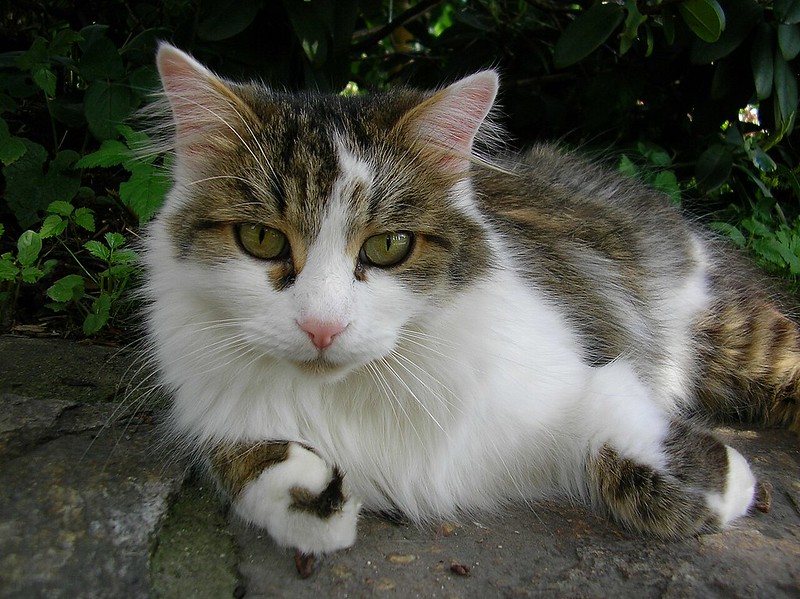In the 1960s, the CIA made a failed attempt to use bugged cats as spies.

By 1960, the Cold War was raging full blast. The United States and Soviet Union faced off with each other over Berlin and Cuba, nuclear weapons were armed and targeted, and the fate of the world hung in the balance.
The Americans were desperate to learn what the Soviets were planning, but their ability to gather information inside the USSR was hampered by the closed police-state society, in which informants and surveillance were everywhere.
Then in 1961, the CIA thought they had a solution. Technicians at the Agency’s Office of Technical Services had already been able to produce small concealable radio devices that could be used to pick up clandestine conversations and radio them back to a nearby listening post, where they could be recorded. CIA operatives began secretly planting their electronic “bugs” into as many Soviet offices as they could gain access to.
The KGB of course figured out pretty quickly what was going on, and diplomats and intelligence officers soon took to holding their secret conversations outdoors instead, away from their bugged offices. This presented the Americans with the difficult task of getting their bugs close enough to pick up these conversations, without being noticed. Somebody at the CIA suggested that stray cats would provide a solution. After all, they were quiet, unobtrusive, and commonly seen everywhere. No one would ever suspect that a stray cat sitting on a sidewalk was secretly monitoring their conversations.
The idea caught on, and the project was codenamed “Acoustic Kitty”. In theory, it was well thought-out. The CIA developed a number of ultra-small microphones, batteries and transmitters which would fit comfortably and safely inside a cat’s body. A number of Moscow’s stray cats were kidnapped and underwent extensive surgery: the microphone was implanted in the feline’s ear canal, the transmitter was attached to the base of the skull, the batteries were placed inside the body cavity, and the antenna was run along the cat’s tail under its fur.
It took some careful adjusting. Some of the cats reacted badly to the implants, and were constantly scratching and biting at them. Afraid that this would attract Soviet attention, the Americans reworked the equipment over and over again, until they had a configuration which seemed to work without bothering the cats.
The next issue was how to get the cats to move into the targeted area and remain there long enough to record everything. To deal with this, several cats were selected for extensive training, attempting to teach them to move into a desired area on command and to voluntarily remain there for as long as necessary, all while acting naturally and without raising suspicion. As anyone who has ever been around a cat knows, however, training cats is like … well … training cats. Most of the bugged felines consistently refused to do what they were told.
Finally, after five years and $20 million in research, the CIA was ready for a field test. A gray and white female cat, snatched years ago from the sidewalks of Moscow and intensively trained, was selected. The surgery to install all of the electronic equipment took over an hour, but after a few weeks of recovery the “Acoustic Kitty” was ready for a trial run.
A team of CIA operatives parked their van across the street from one of Moscow’s parks—an area that was known to be used by Soviet diplomats and intelligence agents. They opened the side door, let the cat out onto the sidewalk, and watched with eager anticipation as the feline secret agent sauntered away towards her target—a pair of Russians sitting on a park bench.
Less then a minute later, as kitty tried to cross the busy street, she was run over by a Russian taxicab, and the operation came to an abrupt end. The crestfallen CIA agents waited for the traffic to clear, then hurriedly ran out and scooped up the cat’s flattened remains from the street—along with the expensive and top-secret electronic bug that had been hidden inside her.
In 1967, a internal CIA evaluation of the program reluctantly concluded, “the program would not lend itself in a practical sense to our highly specialized needs”. Operation Acoustic Kitty was cancelled. The files from the program, still heavily censored and redacted, were declassified in 2001.
But the idea behind the CIA’s failed program still remained, and today, with our advanced knowledge of electronics and biology, it is still under serious study. The Pentagon’s DARPA agency is currently working to produce tiny mechanical drones, less than four inches long, which can carry cameras, microphones or other surveillance equipment. Another DARPA program, however, aims to go this one better: it is carrying out intensive study of the neurobiology in flying insects such as beetles and dragonflies, with the aim of developing electrodes that can control the insect’s brain. The hope is that an operator with a computer terminal would be able to send radio signals to the insect’s brain which can control its movements, steering the tiny living drone to carry a camera or microphone into a desired area and then transmit its information back to the controller.
So far as we know, none of the military’s “bug bugs” has yet become operational.

In the realm of “dumb ideas from the CIA” this one has to rank right up here with the “dusting Fidel Castro’s wetsuit with a powder to make his beard fall out”. (Serious—no joke.)